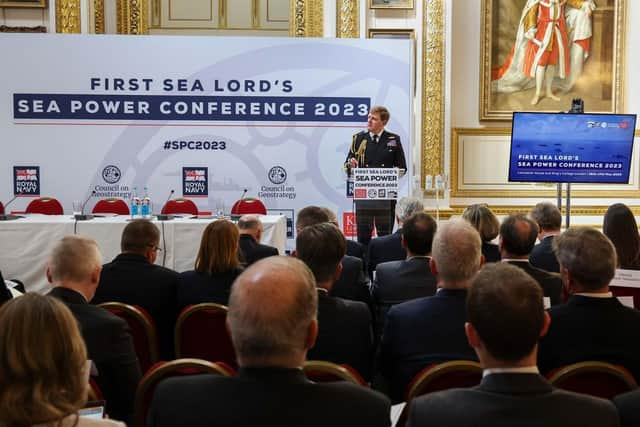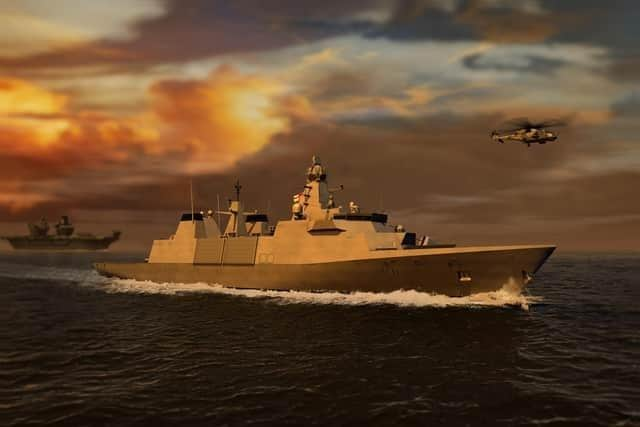Royal Navy must invest in Artificial Intelligence and new technology - First Sea Lord Admiral says in a key speech
and live on Freeview channel 276
That was the message from First Sea Lord Admiral Sir Ben Key in a speech at his annual Seapower Conference where he announced more striking power for future warships and continuing investment in drones and autonomous systems.
The head of the Royal Navy told the conference – a two-day gathering of naval leaders, politicians, analysts, strategists, academics, shipbuilders and defence/technology industry leaders from around the world – the nation had to rise to the challenge, especially that posed by Russian submarines as ‘coming second’ was not ‘a desirable option’.
Advertisement
Hide AdAdvertisement
Hide AdAdmiral Key also praised the nation’s defence industry for responding to a ‘call to arms’ to support today’s Navy – and build tomorrow’s: 16 ships and six submarines are currently on the order books or under construction. But with today’s naval battlefield extending ‘from seabed to space’ and ‘breath-taking’ advances in data and Artificial Intelligence, the Royal Navy had to be ‘deliberately ambitious’ with its goals for exploiting AI.


As for more conventional crewless tech, the Royal Navy is pressing ahead with pilotless helicopters and quadcopters and increased use of jet-powered Banshee drones. But Admiral Key wants to go further – with longer range, longer endurance drones capable of both gathering intelligence and striking at targets.
Another vital element of increasing the striking power of the Fleet is the Mark 41 missile silo. The launcher is being fitted to all eight Type 26 frigates, allowing the new warships to potentially use a variety of current and future anti-air, anti-surface, ballistic missile defence and strike missiles, including the RN’s Future Offensive Surface Weapon. The launchers will also now be fitted to five Type 31 frigates – under construction on the Forth.
For the current Fleet, with the Portsmouth-based HMS Queen Elizabeth and Prince of Wales’ carrier strike groups at its heart, alongside the innovation, training, the expertise and commitment of personnel mean the Royal Navy is a ‘Premier League’ force in the mid-21st Century, Admiral Key said.
Advertisement
Hide AdAdvertisement
Hide Ad

‘As a result of investment over the last two decades we now operate two fifth-generation aircraft carriers, nuclear powered ballistic and attack submarines a range of aircraft, escorts and support ships to allow us to deploy globally, as well as fielding an elite amphibious fighting force.
‘There are very few navies in the world which can do this and so I am delighted that we remain in that first tier.”
And he underlined the need to champion – and recognise – the vital role the sea, the trade which flows on it and data and pipelines which flow beneath it, plays in the security and prosperity of the UK.
‘We must make our voice heard and increase the recognition once again about the vital importance of the sea for our island nation and the global community,” Admiral Key concluded.
Advertisement
Hide AdAdvertisement
Hide Ad‘This is what a seapower state does, what I believe the United Kingdom is and should be and must be into the future and I look forward to the part that we will play in continuing to drive it forward.”